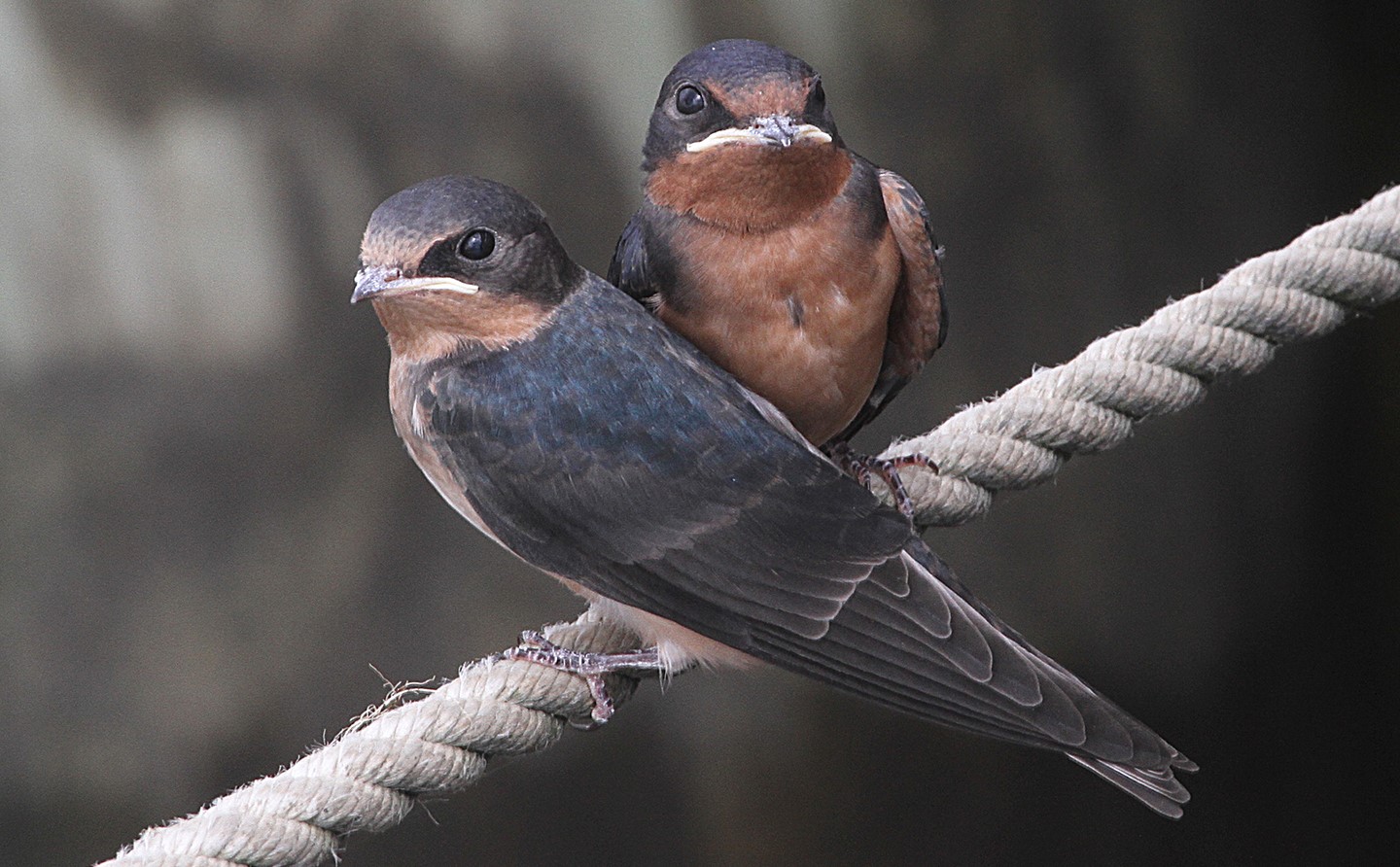Barn Swallow (Hirundo rustica)
category: URBAN AUDUBONENGAGEMENT

Barn Swallows often nest in areas with human development. The tethered rope pictured here makes for a perfect perch spot for them. Photo: Don Riepe
BARN SWALLOW (HIRUNDO RUSTICA)
This article appears in the summer 2023 issue of The Urban Audubon publication.
By Don Riepe
Barn Swallows are one of New York City’s most ubiquitous summer birds and a frequent sight from my dock at Jamaica Bay. This small, beautiful bird is one of the world’s most numerous and widespread. They have a large distribution across almost the entire North and South American continents, and also breed in Europe, Asia, the Middle East, and northern Africa. Barn Swallows are often found in areas of human development; while old or open barns are a preferred nesting site, swallows also nest in boat sheds, under bridges, on building
rafters, and other structures that provide a covered overhang.
While not a conservation concern, these birds are great fun to watch. They arrive in New York in late May or early April from their Mexican, Central and South American wintering grounds, and many stay through August. New Yorkers can help find good nesting spots for them, too. A few years ago I built a little L-shaped ledge under my neighbor’s dock (with his permission) at a site high enough that it wouldn’t be inundated by a spring tide. Within a few days, the swallows began constructing their little cup nest made of mud and lined with grass and feathers. They fledged four young the first year and have returned to the same site every year since. The young leave the nest about 14-23 days after hatching and sit on the dock railing or ropes while being fed by the parents. Both parents feed the young and are sometimes helped by older offspring.
These aerial acrobats are a joy to behold as they zoom around and catch insects, and occasionally mate and drink on the wing. Barn Swallows live about four years on average, although records of up to 11 years have been documented.
Other swallows nest on my dock: Tree Swallows have nested on a pole in a bluebird box, with Purple Martins in a large multiple-dwelling martin house above them. These species help the Barn Swallows in putting a dent in the number of mosquitoes and deer flies that occasionally plague us in summer. Barn Swallows are easily distinguishable from other swallows by their deeply forked tail, rust-colored throat, and pale orange breast. It’s a delight to have them as neighbors.


